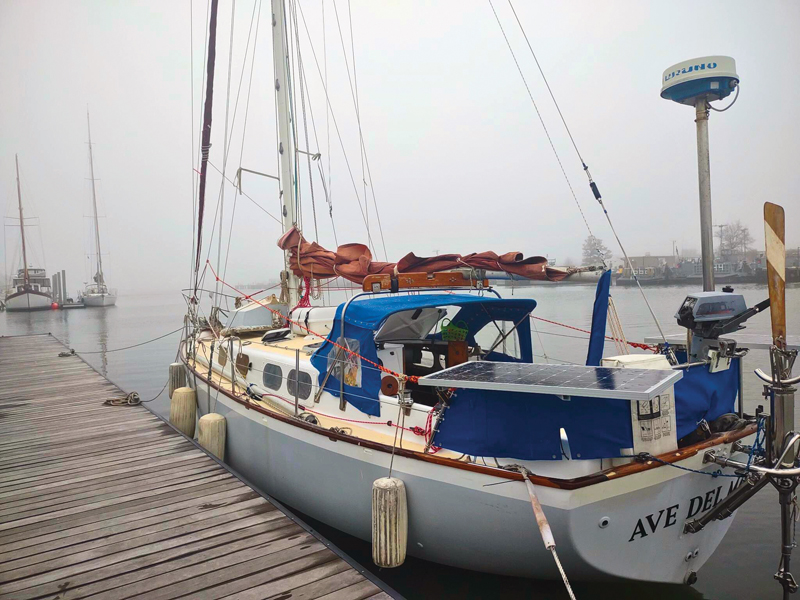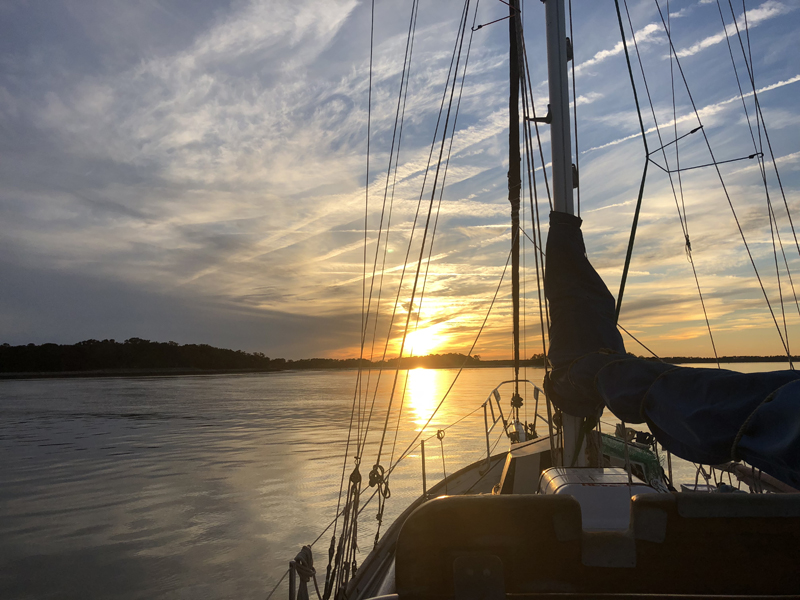There are benefits to leaving "late" when cruising southbound.
It was January of 2016 when I made my inaugural voyage south on the IntraCoastal Waterway, a journey that I had intended to begin the November prior before a leaky transmission O-ring sent me limping home to my slip in Back Creek. Needless to say, I was a fair ways behind the crowds when I finally got underway, cruising southbound.

“We were rafted up three deep at the Dismal Swamp Visitor’s Center,” my friend Chip told me of one of his journeys down the scenic inland path as he explained my berthing options along the route. “That’s just the way it is,” he explained. “We all leave when hurricane season clears.”
But my journey was different. It was a good while before I saw another underway vessel, a lone sailboat motoring north near Norfolk, VA.
“You’re the first boat I’ve seen in four days,” were the words of Robert Peek, the legendary keeper of the Dismal Swamp Canal’s Deep Creek lock (may he rest in peace). “Come inside. I’ve got a pot of coffee on.”
I was mildly suspicious that the coffee had been on the burner since that last boat had passed through, but it didn’t matter. There was a sense of luxury in the air, the luxury of plentiful time and of the absence of hurry. Robert showed me the conch shells he collected from boats returning from the Bahamas and the chess pieces he carved during the slow days of winter. The coffee was terrible. The experience was magnificent.

As I plodded southward, this trend continued. Dockhands’ faces lit up as I pulled into marinas to fuel up, eager for an excuse to do something other than sit inside, waiting. Anchorage after anchorage was dead empty. Not once did I have to relocate because of a neighbor’s noisy generator or skip a spot because it was full. As my mentor Chip had, I tied off at the Dismal Swamp’s Visitor Center for a night, but in contrast to his three-deep rafting up, I had the docks to myself. I was nearly to South Carolina before I shared an overnight with another boat.
I befriended a few strays as I got into those warmer climes, boats that would play leapfrog with me throughout the day as we queued up at bridges or communicated about shoaling or hazards as we all trudged along. There was a natural camaraderie among the group, a shared sense that we weren’t the real pack. We were arriving late to the dance. We were the outliers.
There are other benefits to traveling behind the masses. If you prefer marinas, you’ll find slips easier to reserve and courtesy cars less likely to be booked before you arrive. You may not have to queue up for a shower or washing machine. There might (maybe?) be plentiful hot water waiting for you when you get there. Less traffic at bridges and locks means less stress queuing up and fewer opportunities for mishaps.
There’s a lot to be said about traveling south in early November and the bonding that takes place as a floating community forms on the water. Sundowners and anchorage partners, familiar boat names and voices on the VHF radio meander southward with you and offer you the comfort of friends. But that doesn’t mean you can’t head out after the exodus, on your own schedule, if it fits. It’s a good chance to remind yourself that there are benefits for the outliers, too.
by John Herlig




